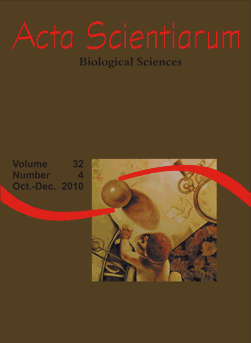<b>An overview of freshwater fish aging in South America: the science, biases and future directions</b> - doi: 10.4025/actascibiolsci.v32i4.8664
Keywords:
age and growth of fishes, South American freshwater fishes
Abstract
South America harbors the largest freshwater diversity in the world (about 4,475 valid species). Aging studies of 153 species published in 92 papers were reviewed for this publication. They were categorized according to the journal where they were published, decade, number of researches per river basin, methods and structures most used to estimate age, validation methods, period and causes of the formation of the age ring and age of the fish in South America. Our results showed an increase in the studies of age and growth, especially in the Paraná river basin. Scales were the structure most used in the studies of aging. Most of the researchers did not validate age. On a continental level, there was no specific period for growth ring formation, but in general, it was related to reproductive activity and flooding period. South American freshwater fishes did not present high longevity (maximum of 15 years). The ongoing governmental support to the fishery in South America, such as in Brazil with the creation of the Ministry of Fishing and Aquaculture, will certainly enlarge the fishing industry. Thus, it is necessary to know and to evaluate the fishery stocks correctly in order to guarantee sustainable use.Downloads
Download data is not yet available.
Published
2010-10-26
How to Cite
Tos, C. D., Gomes, L. C., Ambrósio, A. M., & Goulart, E. (2010). <b>An overview of freshwater fish aging in South America: the science, biases and future directions</b> - doi: 10.4025/actascibiolsci.v32i4.8664. Acta Scientiarum. Biological Sciences, 32(4), 323-333. https://doi.org/10.4025/actascibiolsci.v32i4.8664
Issue
Section
Review
DECLARATION OF ORIGINALITY AND COPYRIGHTS
I Declare that current article is original and has not been submitted for publication, in part or in whole, to any other national or international journal.
The copyrights belong exclusively to the authors. Published content is licensed under Creative Commons Attribution 4.0 (CC BY 4.0) guidelines, which allows sharing (copy and distribution of the material in any medium or format) and adaptation (remix, transform, and build upon the material) for any purpose, even commercially, under the terms of attribution.
Read this link for further information on how to use CC BY 4.0 properly.
0.6
2019CiteScore
31st percentile
Powered by 

0.6
2019CiteScore
31st percentile
Powered by 











1.png)




3.png)













